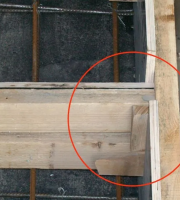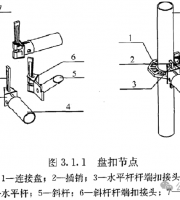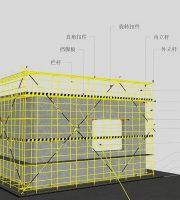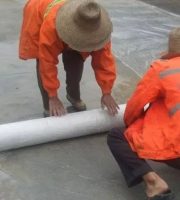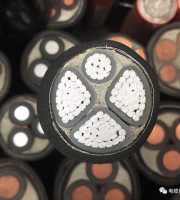Flatness is the key.
① The detailed node treatment mainly aims at the drainage outlet, pipe root, internal and external corners and uneven places on the ground; ② Shaving around the bottom of each nozzle; ③ After shaving the groove, the cement slag and dust shall be cleaned in time, then the water stop strip shall be filled in the groove, and finally it shall be troweled with plugging Wang.
Because it is a concealed project, in case of water leakage, there will be a lot of places that need to be started.
Then use a broom to comprehensively clean the wall, ground, details and other parts.
The purpose is: ① block the pores of the base layer and make JS cement-based waterproof coating fully penetrate into the capillary cracks to achieve the purpose of waterproof; ② Increase the adhesion between the base course and the waterproof layer; ③ When brushing the bottom waterproof coating, JS cement-based waterproof coating shall be directly diluted and applied with thin force to make it penetrate into the pores of the base course.
Therefore, the new specification stipulates that the flatness of the leveling layer shall be checked with a 2m long ruler, and the gap shall not exceed 5m.
Key construction steps 1) make on-site technical disclosure before construction preparation and clarify construction requirements, Arrange the mobilization of construction materials and machines with relevant certificates.
3) Determine the waterproof height, snap the line at the set waterproof height, and the waterproof height of non shower wall in the toilet is 300mm; For toilets where the wall will often contact water, the waterproof height shall be increased to 1800mm; The part with through wall pipe on the wall shall be 200mm higher than the pipe orifice.
Surface quality control 1) if the surface is loose, the strength is too low and the crack is too large, it is easy to make the film and the base course bond loosely.
2、 Construction precautions 1.
Analysis of common quality problems I.
2.
4) Before the construction of waterproof coating, the base course shall be properly watered to prevent drying and cracking.
5) The brushing direction and the density of the continuous waterproof coating are the key to ensure the quality.
The thickness of the second and third coat is 0.4-0.5mm; In order to ensure that the wall is beneficial to tiling, fine sand shall be sprinkled on the wall after the third coating; 48 hours after the completion of waterproof layer construction, the water storage test shall be conducted for more than 24 hours and continuous water spraying for 2 hours.
7) Strengthen the protection of finished products.
2) Base course treatment base course treatment mainly includes detailed node strengthening treatment, large surface node treatment and base course cleaning.
4) Thin coating for many times to ensure the thickness of the film waterproof layer is the main technical requirement of the film waterproof roof.
Construction precautions 3.
The new specification stipulates that the base course shall be compacted and flat without looseness, sanding, peeling, etc.
Others 1) the construction of the next process can be carried out only after the construction of the waterproof layer is completed and passed the inspection.
The requirements for the base course are strict.
Firstly, evenly brush the drain outlet, pipe root and internal and external corners with JS composite waterproof coating, and the brushing width should be 300mm; The grid cloth shall be laid immediately for reinforcement treatment, and the grid cloth shall be pressed flat with a paint brush to fit closely with the lower coating, with an overlapping width of 100mm; After the waterproof construction of the additional layer is completed, waterproof coating shall be carried out at least three times until the design thickness.
The flatness of base course is the key to ensure the waterproof quality of coating film.
The most important part of toilet facilities construction is toilet waterproof construction, which will directly affect the service life, performance, function and convenience of toilet.
It is necessary to open the ground, replace and dismantle pipe fittings, and the repair will be very difficult.
It is required that the painting direction of each coating should be perpendicular to each other, so that the upper and lower coatings cover each other tightly, avoid direct pinhole pores, and improve the integrity and uniformity of the waterproof layer.
2) Carefully brush the bottom waterproof layer and prepare the bottom waterproof agent on the base layer according to the ratio requirements of the first layer.
During construction, it shall be accurately measured according to the specified mix proportion and fully mixed evenly.
In the process of use, it often causes the film and the base course to peel off, which becomes one of the main causes of leakage.
If there is no water seepage and leakage, it shall be qualified, and then the concealed works shall be inspected and accepted and handed over to the next process for construction.
waterproof construction process 1.
The quality assessment and concealed works records shall be made in time, and the technical data of waterproof works shall be made completely..
The thickness of each coating should be 0.4-0.5mm, and the amount of coating is about 1 ~ 1.2 kg / ㎡, which should not be too thick.
The minimum curing time of JS cement waterproof coating is 72h (3 days), and the full curing time is 7 days.
After the construction of the whole waterproof coating, there shall be a natural curing time.
Therefore, during the waterproof construction of the toilet, the material quality must be strictly controlled, and the construction shall be carried out in strict accordance with the requirements of the construction specifications to avoid water leakage in the toilet to the greatest extent.
The base course is the basis for the existence of the waterproof layer.
3) Accurately measure and fully mix JS cement-based waterproof coating.
It will be carried out from the following three aspects: 1.
Construction process flow construction preparation → base treatment → determination of waterproof height → waterproof coating → water storage and sprinkling test 2.
Compared with the coiled material waterproof layer, the requirements for the coating waterproof on the base course are more strict.
The moisture content of the base course is ≤ 9%, the water pipe pressure test is qualified, and the pipe orifice is well protected.
At the same time, the surface shall be treated smoothly with a brush dipped in water.
The first application shall be thin, with a thickness of 0.2-0.4mm; Apply the second coat after an interval of 4-8 hours.
3.
After all detailed treatment, enter the base treatment stage, remove the ash and slag stuck on the leveling layer with a shovel, the surface must be flat, and the depression shall be troweled with a plugging king.
This article gives full guidance on the waterproof construction process of toilet in decoration engineering.
4.
6) At the end of the coating waterproof layer, the waterproof coating shall be painted for many times, or sealed with sealing materials.
Waterproof construction process 2.
If the surface of the base course is uneven or locally uplifted, uneven film thickness and convex parts of the base course are easy to appear when making the film waterproof layer, reducing the film thickness and affecting the durability; The concave part of the base course thickens the coating layer and wastes waterproof coating.
